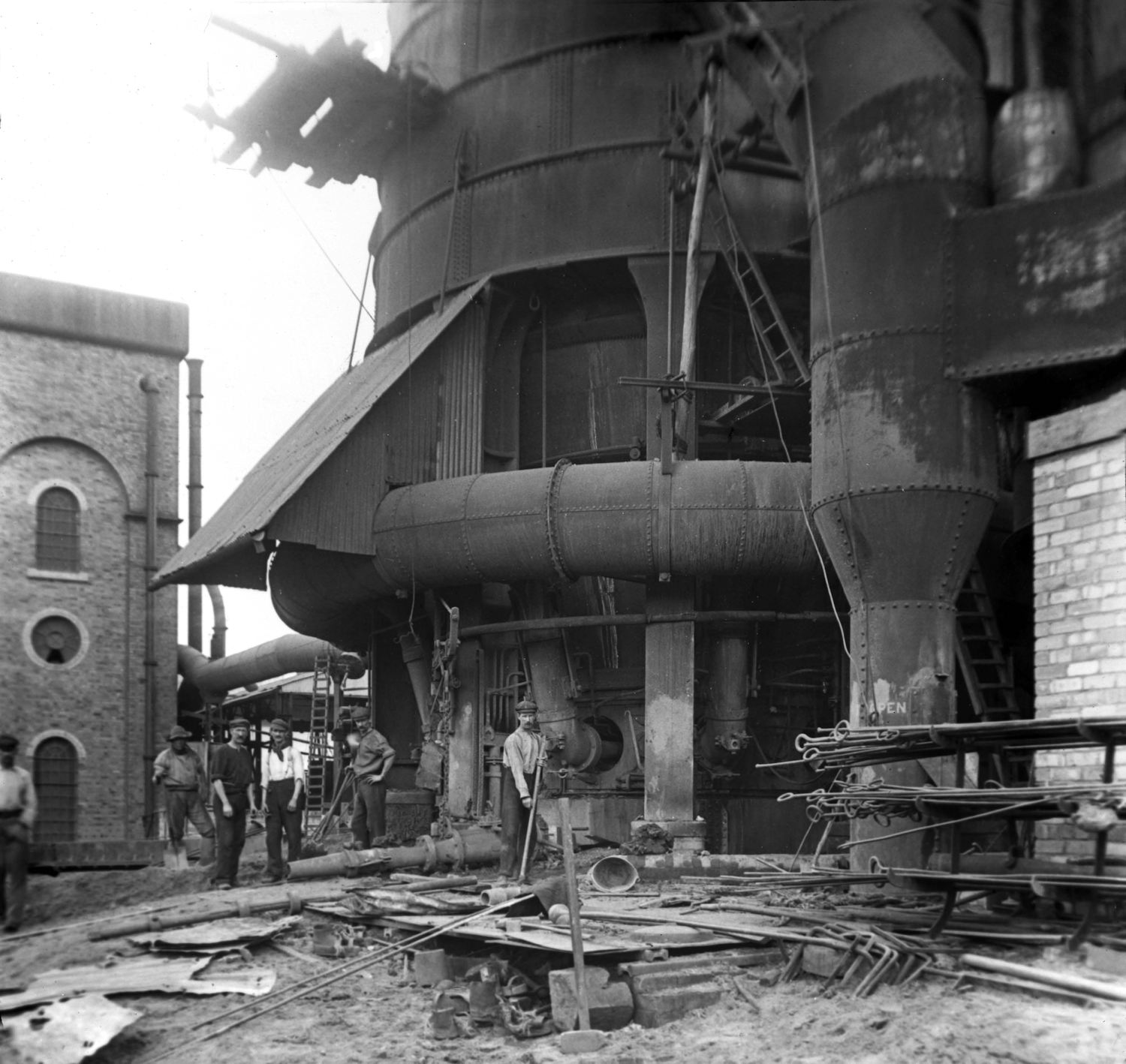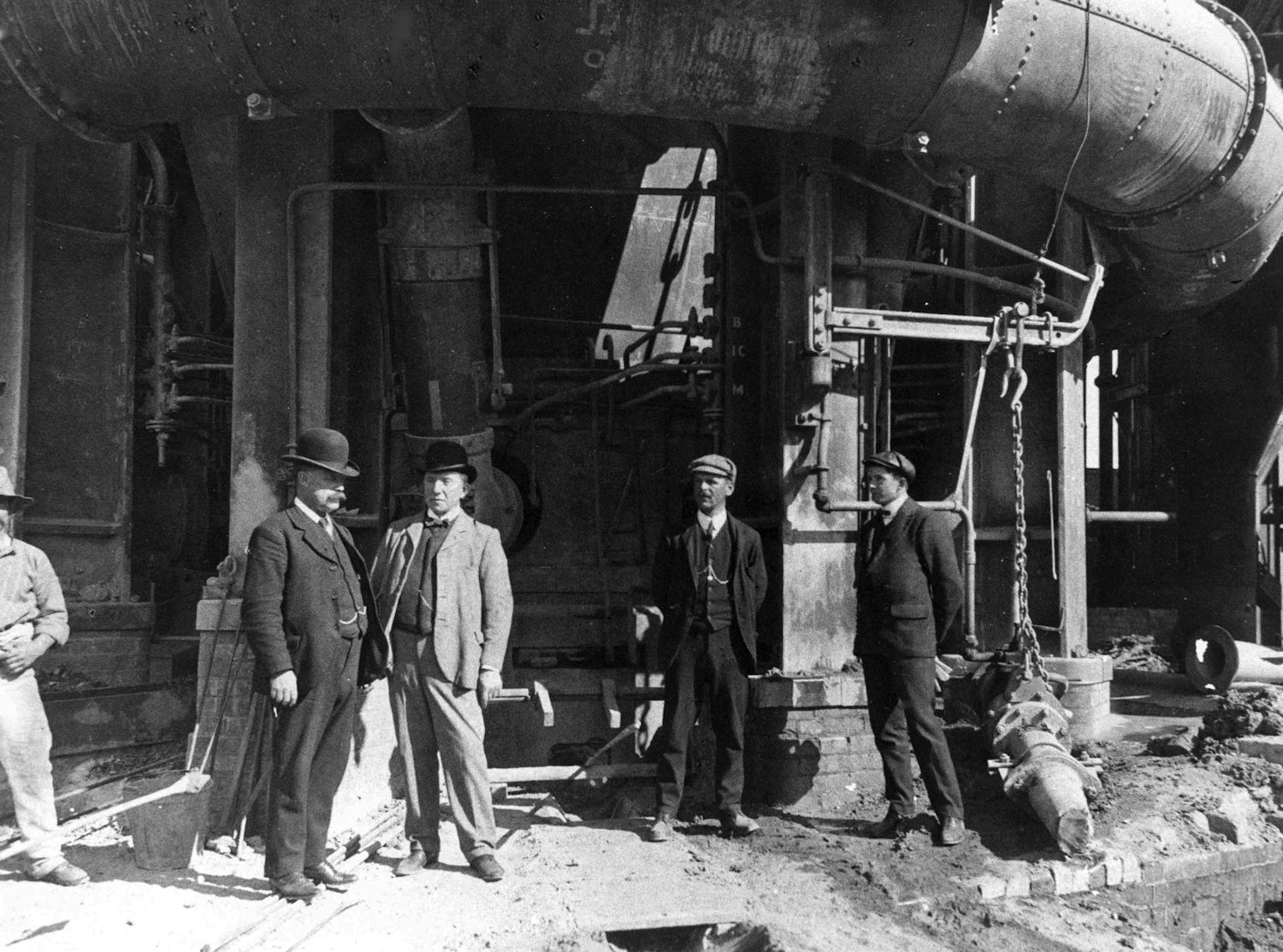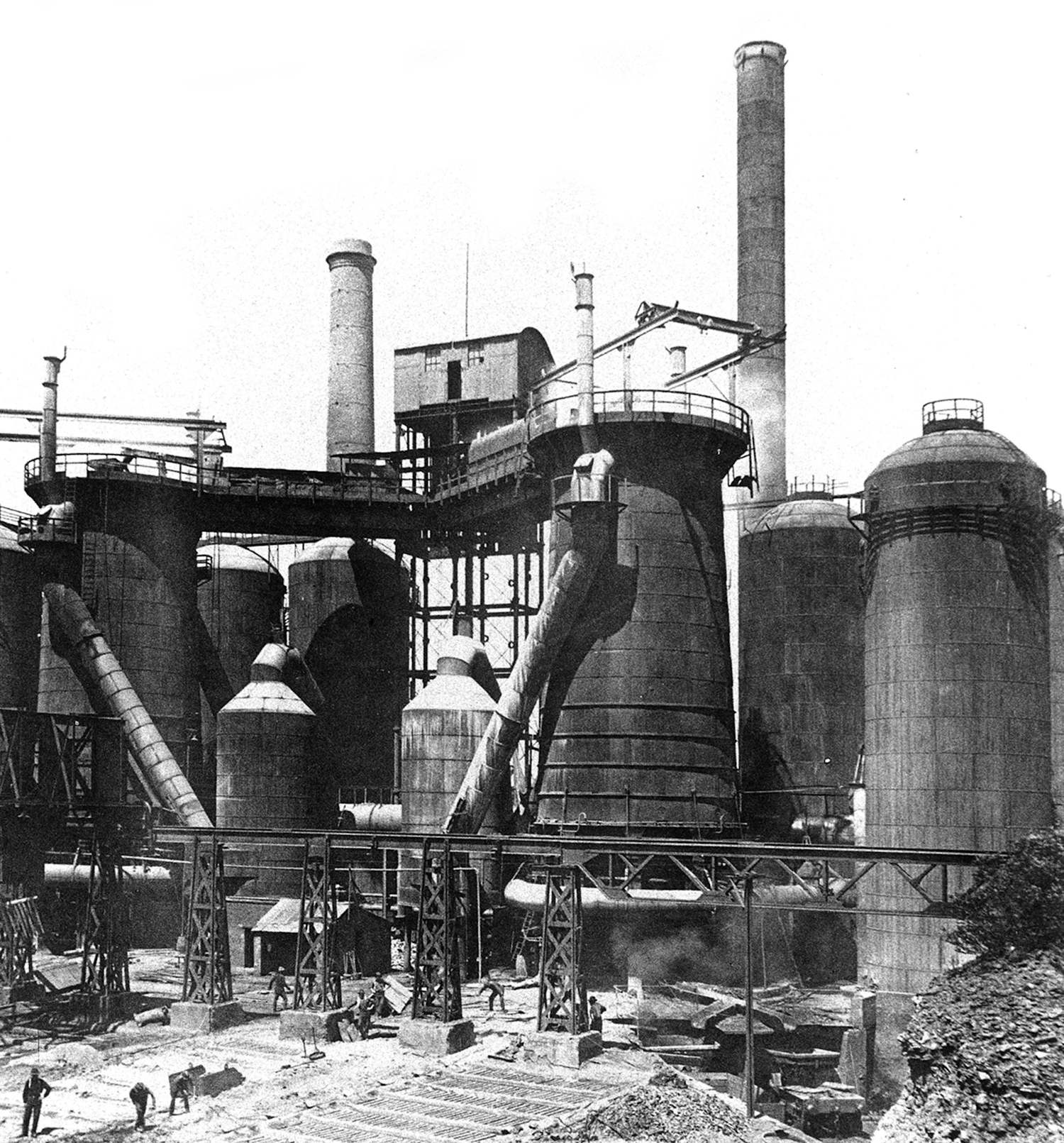Voracious appetite
You are standing below the base of No. 1 blast furnace built by William Sandford and completed in 1907. Sandford’s blast furnace had a voracious appetite and providing the raw materials, of the right quality, was a major challenge.
Making iron
The blast furnace produced ‘pig iron’ from iron ore by the combustion of carbon, supplied as coke at a high temperature, with a fluxing agent such as limestone. The materials or ‘charge’ was manually transferred in barrows from the material bins and then to the top of the blast furnace by a steam operated lift.
The ‘charge’ was then barrowed and loaded onto an inverted bell and hopper system which prevented the escape of furnace gases.
The coke was ignited at the bottom of the furnace and burned rapidly in a blast of pre‑heated air.
Molten iron and slag
The charge separated into molten iron and slag that accumulated at the base of the blast furnace in the hearth. The slag floated on top of the molten iron and was tapped regularly to remove impurities and flux from the mixture. Lower down, the furnace was tapped to remove the iron which ran into moulds resembling piglets feeding from a sow, hence the name ‘pig iron.’
The two blast furnaces at Lithgow were 22.5 metres high, constructed of steel plates, lined with fire bricks and tapered at the base into a
cone referred to as the ‘bosh’.
Men working at the base of blast furnace No.1 Lithgow Library Learning Centre
13 May 1907, William Sandford and managers of the blast furnace. From left, William Thornley (General Manager), William Sandford, P G Pennymore (blast furnace Superintendent) and Roy Sandford (Assistant Manager).
Lithgow Library Learning Centre
Blast furnace No. 2 was constructed by G&C Hoskins Ltd in 1911-13. The construction is almost identical to blast furnace No. 1 but it was greater in diameter.
The furnace hearth is intact to the top of the jacket and includes a complete set of staves and metal surround. The lower parts of 10 cast iron columns are also present although one column and turnbuckle brace has been partially uprooted by the ‘bosh skull’ that fell across it.
The bosh skull
The most spectacular object on the furnace platform is the ‘bosh skull’. It is of considerable technological interest, having been formed from a mixture of iron and slag which solidified in the ‘bosh’ as the furnace cooled during its last days of operation.
The ‘bosh’ is the downward tapering part of the furnace, tapered because as the various materials in the furnace melted they decreased in volume.
No.2 blast furnace (right) after 1916 when the travelling crane had been installed. Each blast furnace is flanked by four Cowper stoves and their chimneys. The barrow hoist with its shed towers above the furnaces.
Lithgow Library Learning Centre
View south across the pig beds and the base of No. 2 blast furnace completed in 1913. The men are manually breaking pigs for transport to the steelworks. The brick Keeper’s House with dust extractor immediately above are clearly visible.
Thomas James Rodoni, Rodoni Collection, University of Newcastle





